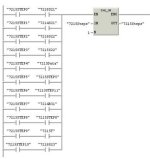Sub-routine
- Thread starter rblopena
- Start date
Similar Topics
We have a project that has all the routines viewable but not editable. I just want to force a bit high but cant do it. The only way to do so is...
Good Morning ,
I'm merging another RS Logix 5000 PLC program ( CompactLogix ) into another . Everything is working great except this one...
Hello everyone,
I am new to ladder logic and am currently working on a small project where I might need some help. So I am modifying the sequence...
Currently I am using a bunch of TON's and TOF's to start up and turn off a motor sequence. I created a sub routine for the manual sequence and I...
Hi all,
In the past I have use Sub Routines more as a organizational tool for my programs than anything else. I would just put things into nice...






